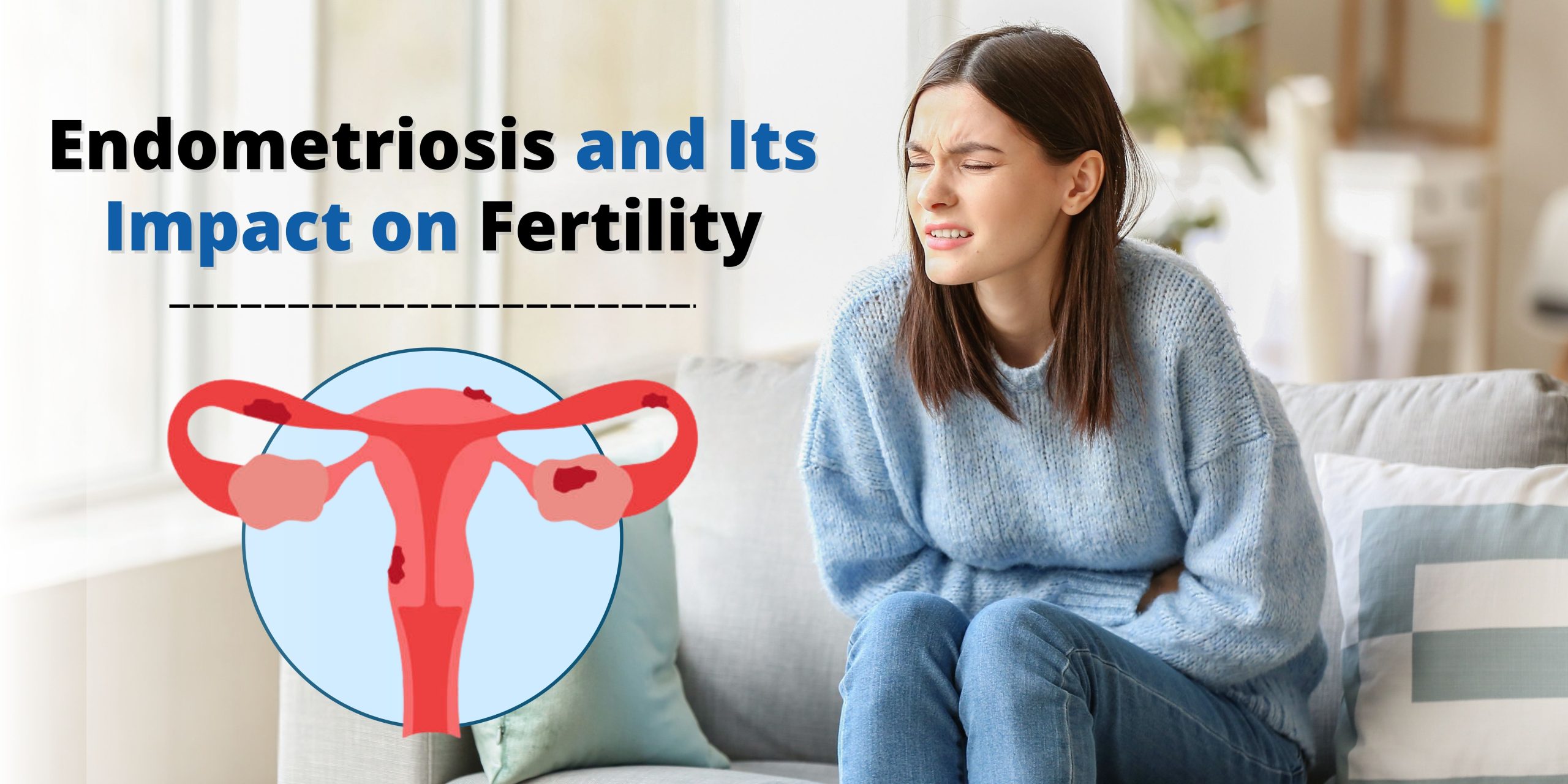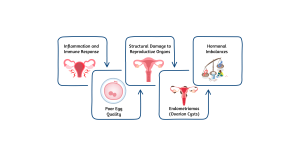
Understanding Endometriosis
Endometriosis is a long-term and often painful condition that affects millions of women globally. It occurs when tissue similar to the lining of the uterus, known as the endometrium, grows outside the uterus. This misplaced tissue can be found on the ovaries, fallopian tubes, and even the intestines or other pelvic structures. Despite being outside the uterus, this tissue behaves like normal endometrial tissue—it thickens, breaks down, and bleeds with each menstrual cycle. However, unlike the uterine lining, which is shed during menstruation, this displaced tissue has no way to exit the body, leading to inflammation, scar tissue formation, and adhesions.
Symptoms of Endometriosis
The symptoms of endometriosis vary, but they commonly include:
- Severe menstrual cramps (dysmenorrhea)
- Chronic pelvic pain
- Pain during intercourse (dyspareunia)
- Heavy menstrual bleeding or irregular periods
- Painful bowel movements or urination, particularly during menstruation
- Fatigue, nausea, and bloating
- Difficulty conceiving (infertility)
How Endometriosis Affects Fertility
Endometriosis is a leading cause of infertility, affecting approximately 30-50% of women with the condition. The mechanisms through which endometriosis impairs fertility include:
- Inflammation and Immune Response
Chronic inflammation caused by endometriosis can alter the pelvic environment, leading to increased immune activity. This can damage eggs, impair sperm function, and interfere with fertilization. - Structural Damage to Reproductive Organs
Endometriosis can cause adhesions and scar tissue formation, which may block the fallopian tubes or distort pelvic anatomy. This makes it difficult for eggs to travel from the ovaries to the uterus for fertilization. - Hormonal Imbalances
Endometriosis is associated with hormonal imbalances that can interfere with ovulation and the implantation of a fertilized egg. Women with endometriosis may experience lower progesterone levels, which are essential for a healthy pregnancy. - Poor Egg Quality
The inflammatory environment created by endometriosis may negatively impact the quality of eggs, reducing the chances of successful fertilization and embryo development. - Endometriomas (Ovarian Cysts)
Women with endometriosis often develop ovarian cysts known as endometriomas. These cysts can reduce ovarian reserve and affect the normal function of the ovaries, further contributing to infertility.
Diagnosing Endometriosis

Endometriosis is often challenging to diagnose because its symptoms can mimic other conditions like irritable bowel syndrome (IBS) or pelvic inflammatory disease (PID). The most common diagnostic methods include:
- Pelvic Exam: A doctor may feel for cysts or scars behind the uterus.
- Ultrasound: Transvaginal ultrasound helps detect ovarian cysts associated with endometriosis.
- Magnetic Resonance Imaging (MRI): Provides a detailed view of pelvic organs and helps in surgical planning.
- Laparoscopy: A minimally invasive surgical procedure where a small camera is inserted through the abdomen to visualize and confirm the presence of endometriosis.
Treatment Options for Endometriosis and Infertility
There is no definitive cure for endometriosis, but various treatments can help manage symptoms and improve fertility outcomes.
- Medications
- Pain Management: Anti-inflammatory medications like ibuprofen can help alleviate discomfort.
- Hormonal Therapy: Birth control pills, gonadotropin-releasing hormone (GnRH) agonists, and progestins can suppress endometriosis symptoms but may not be ideal for women trying to conceive.
- Surgical Treatment
- Laparoscopic Surgery: This procedure removes endometrial implants, adhesions, and cysts to restore pelvic anatomy and improve fertility.
- Hysterectomy (Last Resort): In severe cases, removal of the uterus and ovaries may be considered if symptoms are debilitating and childbearing is no longer a priority.
- Assisted Reproductive Technologies (ART)
- Intrauterine Insemination (IUI): Suitable for mild cases of endometriosis.
- In Vitro Fertilization (IVF): The most effective treatment for infertility related to endometriosis, bypassing potential fallopian tube blockages and improving fertilization rates.
Lifestyle and Dietary Changes for Managing Endometriosis

While medical treatment is essential, lifestyle modifications can also play a crucial role in managing endometriosis and improving fertility:
- Anti-Inflammatory Diet: Eating foods rich in omega-3 fatty acids, antioxidants, and fiber can help reduce inflammation.
- Regular Exercise: Engaging in moderate physical activity can help alleviate pain and regulate hormones.
- Stress Management: Practices like yoga, meditation, and acupuncture can support hormonal balance and overall well-being.
- Limiting Toxins: Avoiding endocrine-disrupting chemicals (EDCs) found in plastics, cosmetics, and processed foods can help maintain hormonal health.
Conclusion
Endometriosis is a complex condition that affects not only a woman’s reproductive health but also her overall quality of life. While it can pose significant challenges to fertility, advancements in medical treatments, assisted reproductive technologies, and lifestyle modifications offer hope to women seeking to conceive. Early diagnosis and proactive management can improve fertility outcomes and help women with endometriosis achieve their family-building goals. Consulting a fertility specialist can provide personalized guidance and treatment options. Raising awareness about endometriosis during Endometriosis Awareness Month is essential to ensuring that more women receive the timely diagnosis and support they need.
